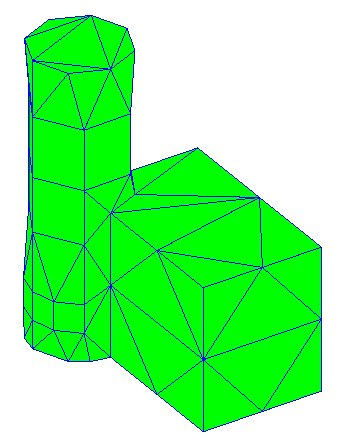|
|
LITR 5431
Literary & Historical Utopias
|
|
Sara J. Stevens
March 30, 2019
Instructions
During my time in the Literary and
Historical Utopias class, and throughout my readings for the course, I began to
wonder how a person or persons would create and build a utopia.
I disregarded this as fanciful thought.
While beginning my research for this post, I came across several websites
and videos that made claims to show how to build a utopian community.
This struck my interest.
Utopias and utopian communities, I know, do not generally last; even literary-based fictional utopias. In class
we have discussed many reasons for the failures of both historical and fictional
utopian or intentional communities.
My question is not how to maintain a community; but how do you go about the
initial startup?
The first question I had to ask myself
was, what are the conventions of a utopian society?
We have talked at length about this topic in class.
So, who do we allow in an intentional community?
The answer here seems simplistic; those who are like-minded and are
wanting the same goals. In
Charlotte Perkins Gilman’s Herland,
the answer was women who were cut off from the rest of the world through natural
disasters. According to Fellowship
for Intentional Community (FIC), you want to filter in the right people, and
filter the wrong types of people out.
FIC believes in order to do this you need to assess the “expectations,
hopes, and aspirations of the group” (Fellowship for Intentional Community).
This statement, to me, means finding people who share a common outlook on
how the world should look; similar to that of the 2004 movie
Stepford Wives.
The FIC asks prospective members to figure out what they want in a
community. From there, they have an
exercise, with questions to discover their group’s values; this even comes with
directions on how to do this along with a material list and steps to separate
people into groups based upon their beliefs.
Maitri House, an urban intentional community, founded in 2008 in
Maryland, has an attached list of questions to help those looking to establish
an intentional community. The
attachment is a list of questions, not unlike FIC’s; created to determine what
type of community is best and the goals and values they are looking to
establish. The questions created by
Maitri House range from, number of people to “why types of practices or shared
understandings will we adopt to address the conflict that may arise from
differences (age, race, income levels, culture…)” (Maitri House).
Maitri House, like Ernest Callenbach’s
Ecotopia, understands that different
cultures and races, may have conflict and looks to mitigate that by addressing
them in the process of establishing the community.
Both FIC and Maitri house, go into detail on selecting people for the
communities. Money Crashers, an
informational and educational website, offers a view on another convention; the
living arrangements.
“Communal Living
and Cohousing Types and Benefits of Intentional Communities,” is an article
whose focus is on the living arrangements of intentional communities.
The article proposes communal living is a more economic way of living.
According to moneycrashers.com “People
who live in cohousing arrangements can save money, share chores, enjoy group
activities, and form lasting friendships”.
The website, does not propose the community members share their land,
resources or income, only that they share living space.
One Community Global, a website whose authors created as a blueprint for
creating a utopia, “we are operating as a
sustainability think tank to demonstrate and build 7 different communal living
mini-village models of 15-100 residences….” (One Community).
One Community states these communities would be spread across the globe.
Communal living seems to be the current convention for the living
situations of future utopian and intentional communities.
This brings me to the financial aspect of the communities.
In the past, intentional communities,
such as the Oneida Community, have established some sort of industrial trade in
order to fund their community. The
community projects, attempting to establish a utopic vision, I have previously
mentioned, do not directly address how these communities are to be funded.
One Community, does offer links to donate and mentions consultants and
partners in the organization. My
assumption is that the start-up for these communal living projects will be
funded by those who are wishing to establish residence in those communities.
I feel this could be problematic for the future of any community begins
like this. They do all believe in a
self-sustainable community based upon agriculture; however, without any direct
capital coming in on a regular basis, they seemed doom to fail as Brook Farm
did. Other conventions of utopic
communities that were not directly addressed were: the raising and caring for
children, how the communities are to be governed, and how to procure the land in
order to build these communities.
Most utopic and intentional communities
fail. The websites I reviewed made
no mention on how their communities were going to differ from those of the past.
One Community seemed to be the most through, regarding instructions on
how to build a utopia. They all
made mention of their ideals and want for a self-sustained, low-environmental
impact community, where all of the inhabitants are of the same ideals.
If you are wishing to build your own utopia, the websites I have
mentioned, are a great place to start.
The ideals presented, are indeed, utopic; but leave a lot of unanswered
questions.
Works Cited
“Communal Living & Cohousing – Types & Benefits of Intentional Communities.”
Money Crashers.
Retrieved from URL
https://www.moneycrashers.com/communal-living-cohousing-types-benefits-intentional-communities/.
“Creating an Intentional
Community.”
Maitri House.
Retrieved from URL
http://maitrihouse.org/?page_id=253.
One Community for the Highest Good of All.
Retrieved from URL
https://www.onecommunityglobal.org/creating-utopia/.
“Setting Community Goals and
Values in a Vision Statement.”
Fellowship for Intentional Community.
Retrieved from URL
https://www.ic.org/wiki/starting-a-community/.




